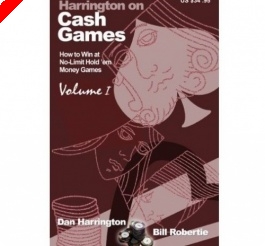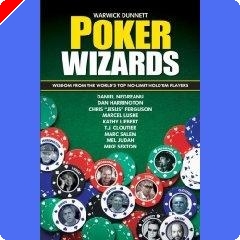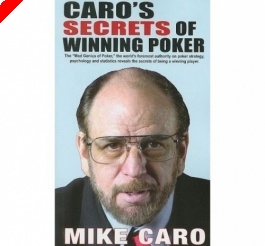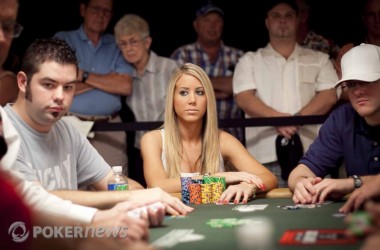Poker Book Review: 'Harrington on Cash Games, Volume II'

The first two volumes of Harrington on Hold'em, Dan Harrington and Bill Robertie's groundbreaking books on no-limit hold'em tournament strategy, though certainly complementary, are in many ways distinct works. The first HOH volume served as a comprehensive introduction to NLHE tourneys while the second focused on various playing styles and shifting considerations related to the different stages of a tournament. In other words, a player with some tourney experience could feasibly pick up Volume II without having read the first book and still be adequately prepared for the second book's explanations of inflection points, "M" and "Q," and everything else.
However, the two volumes of Harrington on Cash Games: How to Win at No-Limit Hold'em Money Games as noted in our review of Volume I, are more obviously intended to be read together. In fact, Volume II assumes the reader's familiarity with the first book to such an extent it would make little sense to attempt the second book without having read the first. One reason is the discussion of tight-aggressive play — the cornerstone of the pair's strategic advice for NLHE cash games — is spread over the two books, with preflop and flop play covered in Vol. I and turn and river play in Vol. II. Not only would the sequence be incomplete should one begin with the second book, references in the second book to important concepts like pot commitment, bet sizing, "balancing" plays and the like may be less than clear without the extensive theoretical framework covered earlier.
The discussion of turn play (the first part of Vol. II, labeled Part Six) covers several important considerations, all of which connect to the fact that since pot odds differ significantly with just one card to come, "you don't need to make a big bet to deny your opponent calling odds on the turn." Such is true for one's opponent, too, of course, and thus do most of the turn decisions addressed here focus heavily on pot odds (and implied odds). In situations where one is likely ahead on the turn, the authors emphasize the importance of betting so as to get money into the pot before a river card potentially discourages one's opponent's interest in the hand. "We call that card a 'cooler,'" say the authors, not using the term as it is commonly applied (i.e., with reference to one's being "cold-decked"), but rather as a river card that "cools" the action. Also, in an especially advantageous situation where one wishes to play for stacks, the pair explain how to size one's turn bets appropriately so as to make the river all-in more possible.
On the river (Part Seven), hand reading is paramount, as is the need to balance one's play so as to remain unreadable oneself. As with the section on turn play, the strategy discussion here is relatively short, with much more space devoted to breaking down sample hands (the "problems"). "Every story [of a hand] is a little different, and every story is affected by its context," the authors explain. Believing "the best way to learn how to interpret these stories is by example," sample hands predominate in these lessons.
As was the case in Vol. I, these "problems" are again useful, although occasionally one encounters what appears to be a slight disconnect between the tight-aggressive strategy being recommended and the sample hands. Each hand begins with the "situation," and in most examples here "you" play a tight-aggressive style. However, sometimes that is not the case, such as in one hand where "you like to play lots of hands" and are "tricky and trappy." This apparent contradiction seems a function of the authors having chosen actual hands (from live and online play) to discuss rather than having invented situations and hands that perfectly illustrate players flawlessly executing their ideas. The effect is something like a teacher dealing with a variety of students, all with unique levels of skill and knowledge, and trying to instruct each to follow the tight-aggressive approach being recommended.
Part Eight, "Tells and Observations," offers an interlude of sorts with a review of physical tells in live play, betting patterns, and "the dangers of table talk." Despite what one often sees in the movies, Harrington and Robertie believe physical tells are "not as important an element of the game as most people think," attributing much more significance to betting patterns. Even so, while reading others' tells may not be vitally important, minimizing one's own potential tells is a matter most certainly worth considering, and the authors advise accordingly.
Part Nine then goes back to strategy with a relatively brief (30-page) overview of loose-aggressive play, here presented as an occasional alternative for the tight-aggressive player to employ for the purposes of deception. The difference in the styles primarily concerns the number of hands one chooses to play, with a few added considerations resulting from one's decision to contest a relatively higher number of pots. The authors present nine common "tactics" of loose-aggressive play (e.g., the "bad board bet," the "double-barrelled blast"), as well as how best to play against such a player. In fact, most of the dozen "problems" subsequently presented involve situations in which "you" are not the loose-aggressive player, but are rather having to contend with such a type.
Next follows another brief section on "Beating Weak Games" (Part Ten). Whether tight or loose, passive or aggressive, weak players tend to employ "linear" (i.e., consistent), easily readable styles of play. Such players also tend not to pay much attention to others' styles, and thus remain unaffected, continuing to pursue their own unimaginative style with little or no variation. In such circumstances, "balance and deception become less important," and thus the authors recommend a counter-strategy which is also "linear" or straightforward. They helpfully contrast the approach as "pure offense," as opposed to the defensive style they had been recommending all along for tougher games. Sample hands again help clarify the concepts they here recommend work best at $1/$2 live games or $0.10/$0.25 online games.
Part Eleven then addresses "Bankroll Management and Other Topics," providing guidelines for finding one's appropriate limits (and moving up and down), the pros and cons of multitabling online, dealing with tilt, "euphoria" (a hot streak), and "the accountant's syndrome" (aiming to win certain amounts), and even sharing some thoughts about paying taxes. The book concludes with a short interview with long time cash-game specialist and 1979 WSOP Main Event runner-up Bobby Hoff (Part Twelve). Hoff offers historical anecdotes about particular players, and also helpfully outlines his own approach to aggressive cash game play.
Will Harrington on Cash Games ever approach the degree of influence enjoyed by Harrington and Robertie's tourney books? Likely not, although the books' fate largely depends on the relative popularity of tournaments versus cash games. With shows like High Stakes Poker and the cash game variant of Poker After Dark continuing to attract audiences, more and more players are making the move to cash games, and for these players Harrington and Robertie's books do provide much useful guidance in a highly-readable format. Indeed, while intermediate and experienced cash game players might certainly benefit from some of the advice given in Harrington on Cash Games, the volumes likely work best as an introduction to new players playing at lower stakes.








